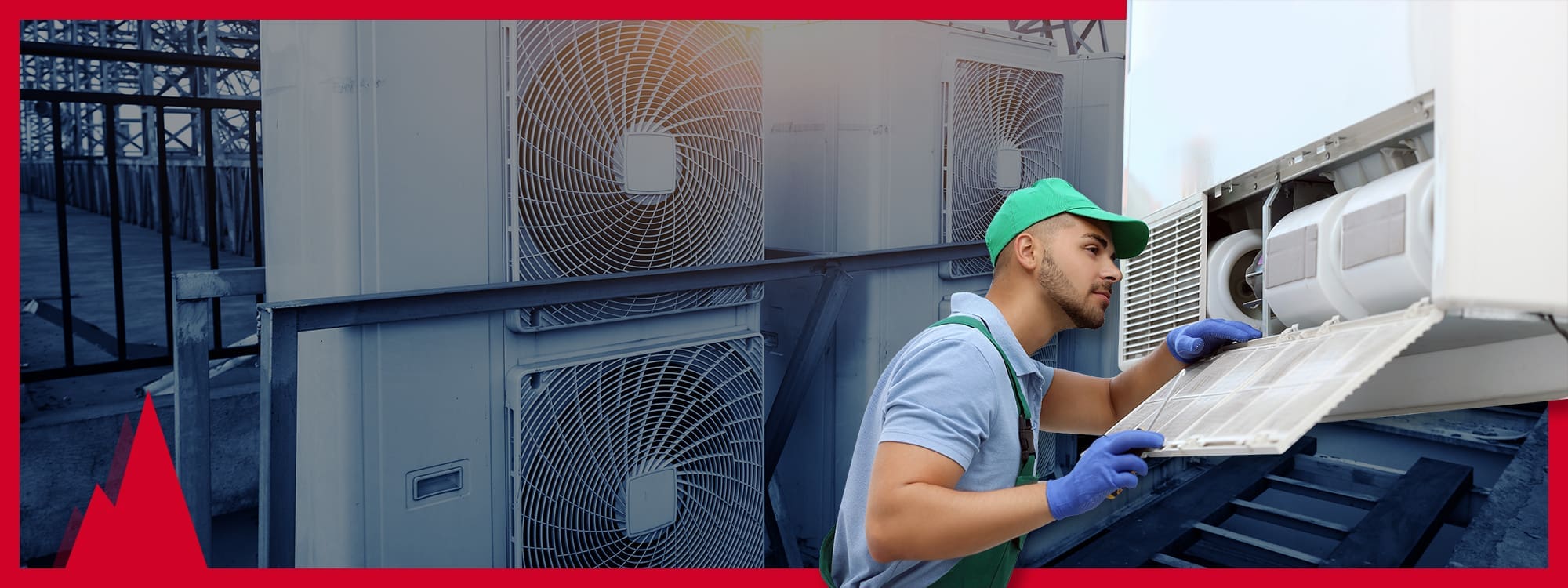Commercial businesses of all kinds need to have effective HVAC systems to keep both their customers and employees comfortable. If you’re considering training to become an HVAC technician, it’s important that you understand the types of commercial HVAC systems available so you’ll be able to repair and maintain them. HVAC technicians are always in high demand in the commercial space – no one wants the AC or heat to go out in a hospital, hotel or restaurant, for example.
Let’s walk through the types of commercial HVAC systems and look at the similarities and differences.
Commercial HVAC System Components
There are a number of components that are typical in a commercial HVAC system. For example, in residential settings, HVAC units are typically located to the side of the house, but in large commercial facilities, the units are usually located on the roof. Two types of heaters may be used – either radiant heaters for direct heat, or hot air furnaces that burn fuel to heat air. Heat pumps are another heating option, in which heat is extracted from water or air. Chillers are another component of many commercial systems; chillers use cool water which is piped into air cooling coils to chill the air.
Single Split Systems
Single split systems are the most affordable commercial HVAC systems, and are best used for smaller commercial buildings. These self-contained systems heat and cool individual rooms (such as small offices, shops, or server rooms). Each indoor unit must be paired with a corresponding outdoor unit. The nice thing about single split systems is that, not only are they less expensive than other systems, but also, if one unit breaks down, it won’t affect the others. So, one room may lose AC, but not the whole building.
Multi Split Systems
Multi split systems are very similar to single split systems, except you can connect up to nine multiple indoor units with just one outdoor unit. This is particularly helpful if your building doesn’t have a lot of outdoor space, and also just looks better than having many outdoor units. A multi split system is more energy efficient – instead of burning energy by turning the system on and off, this system has sensors to identify temperature changes and adjust as necessary. Finally, the multi split system uses heat pumps to move heat from warm areas to cool ones – this also saves on heating costs.
VRF System
A VRF (variable refrigerant flow) system is typically used in larger commercial facilities such as big office buildings or hotels. A heat pump VRF system can provide heating and cooling to a building, but not both at the same time. This option is best suited for buildings with large open floor plans. For buildings with many smaller rooms, a heat recovery VRF system is a better choice, because it can heat and cool different rooms at the same time.
If you’re interested in starting a rewarding career in the HVAC industry, check out the HVAC Program at Summit College. Summit helps students like you get the hands-on training and skills they need to join the skilled professionals out there who are making the world a more comfortable place. With flexible scheduling options and free tutoring, we’ll help you prepare for the EPA 608 Universal Certification test, and the initial NATE Core Certification. Get your future started now! Contact us today!



